Abstract
d-Xylulose, an intermediate of d-xylose catabolism, was observed to be fermentable to ethanol and carbon dioxide in a yield of greater than 80% by yeasts (including industrial bakers' yeast) under fermentative conditions. This conversion appears to be carried out by many yeasts known for d-glucose fermentation. In some yeasts, xylitol, in addition to ethanol, was produced from d-xylulose. Fermenting yeasts are also able to produce ethanol from d-xylose when d-xylose isomerizing enzyme is present. The results indicate that ethanol could be produced from d-xylose in a yield of greater than 80% by a two-step process. First, d-xylose is converted to d-xylulose by xylose isomerase. d-Xylulose is then fermented to ethanol by yeasts.
Full text
PDF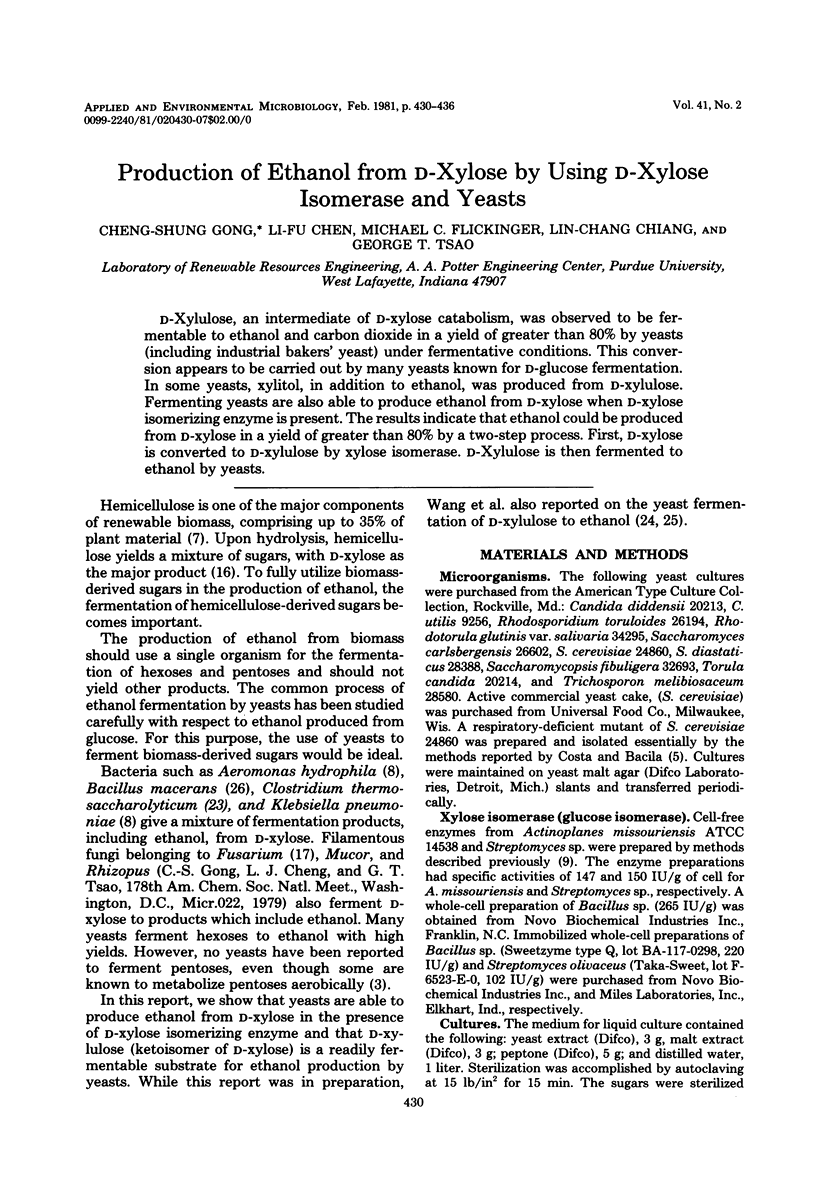
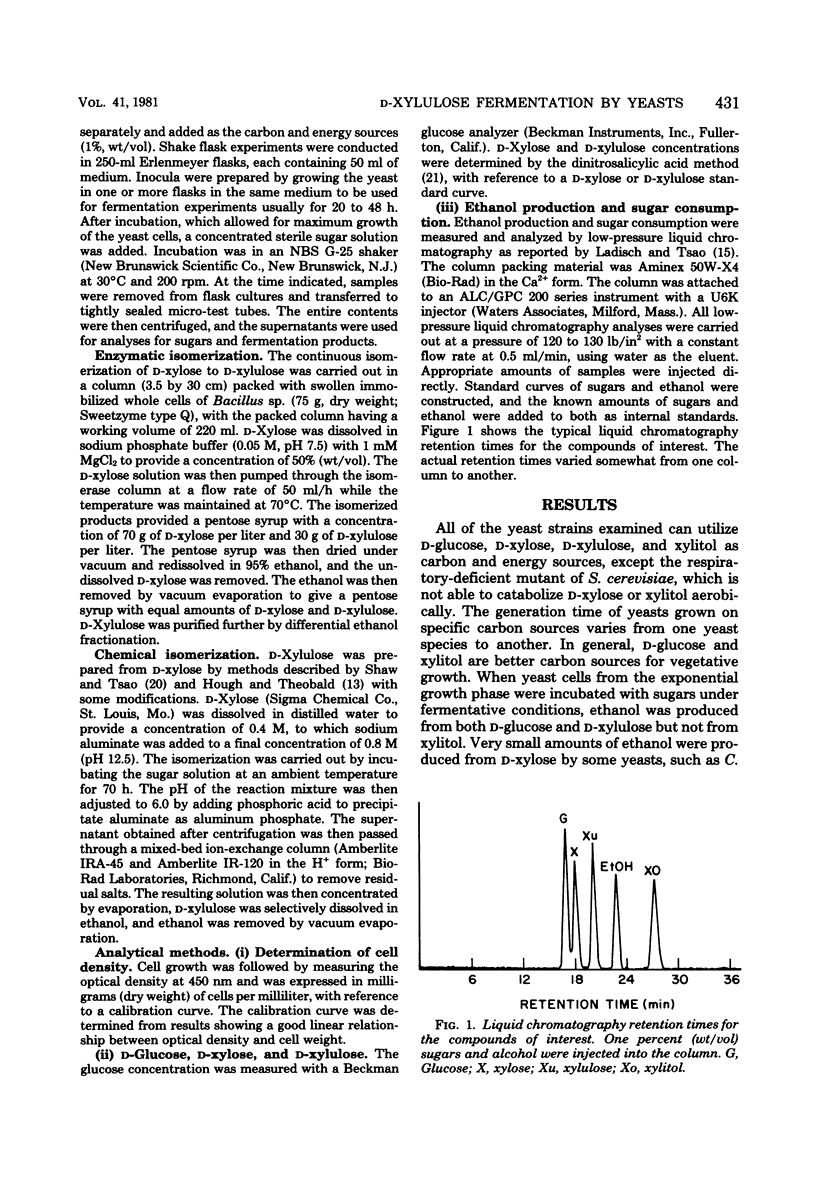
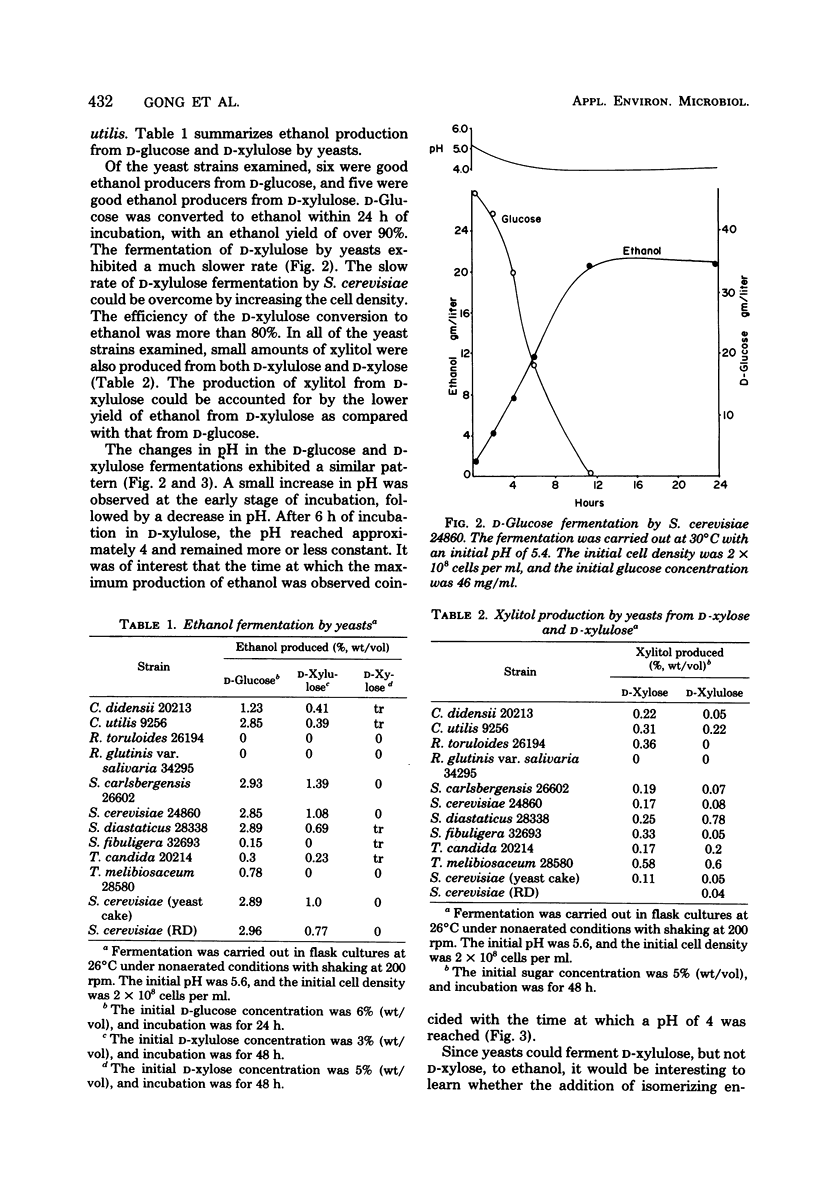
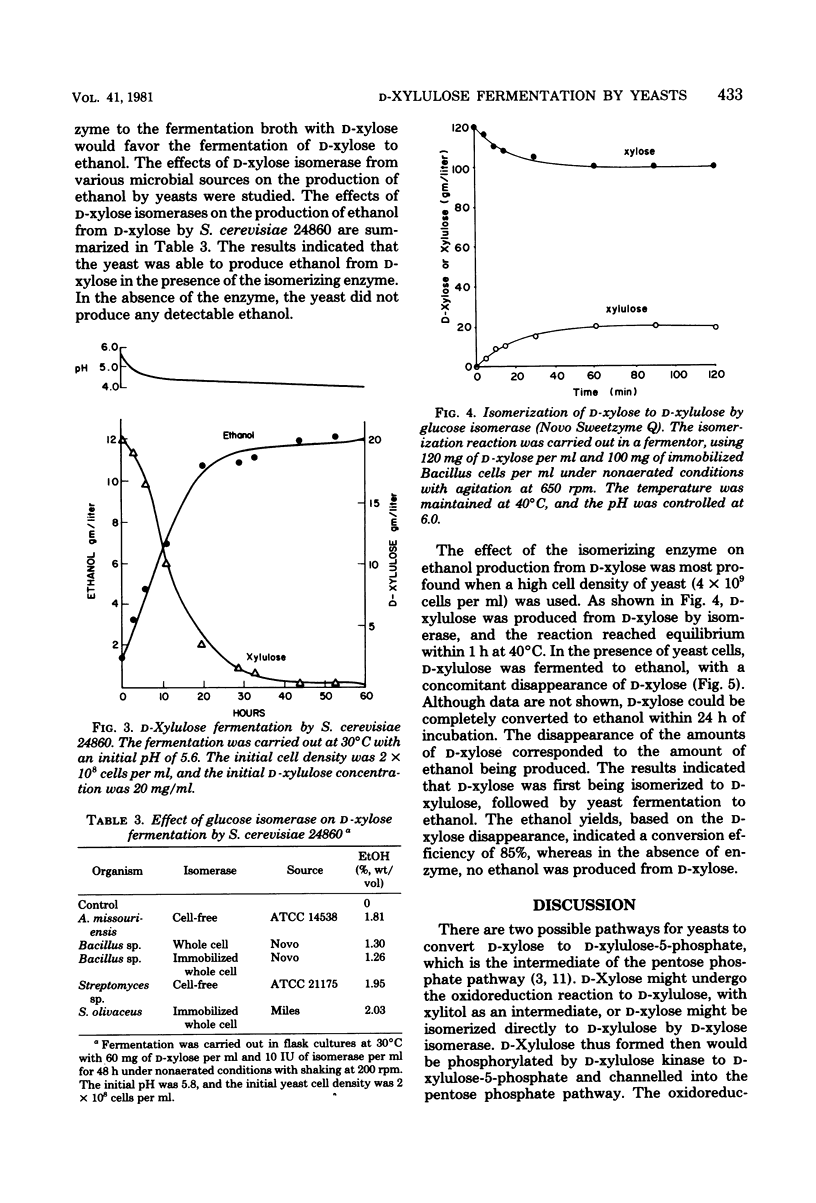
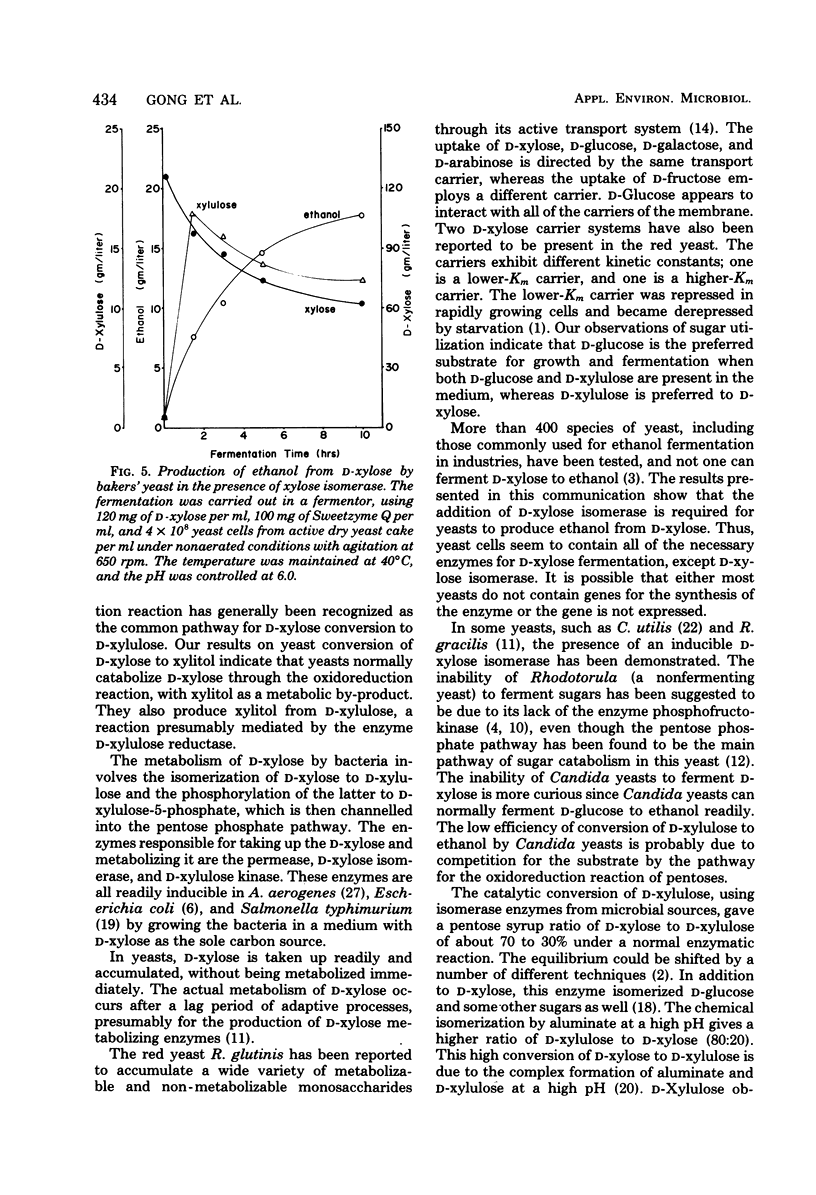
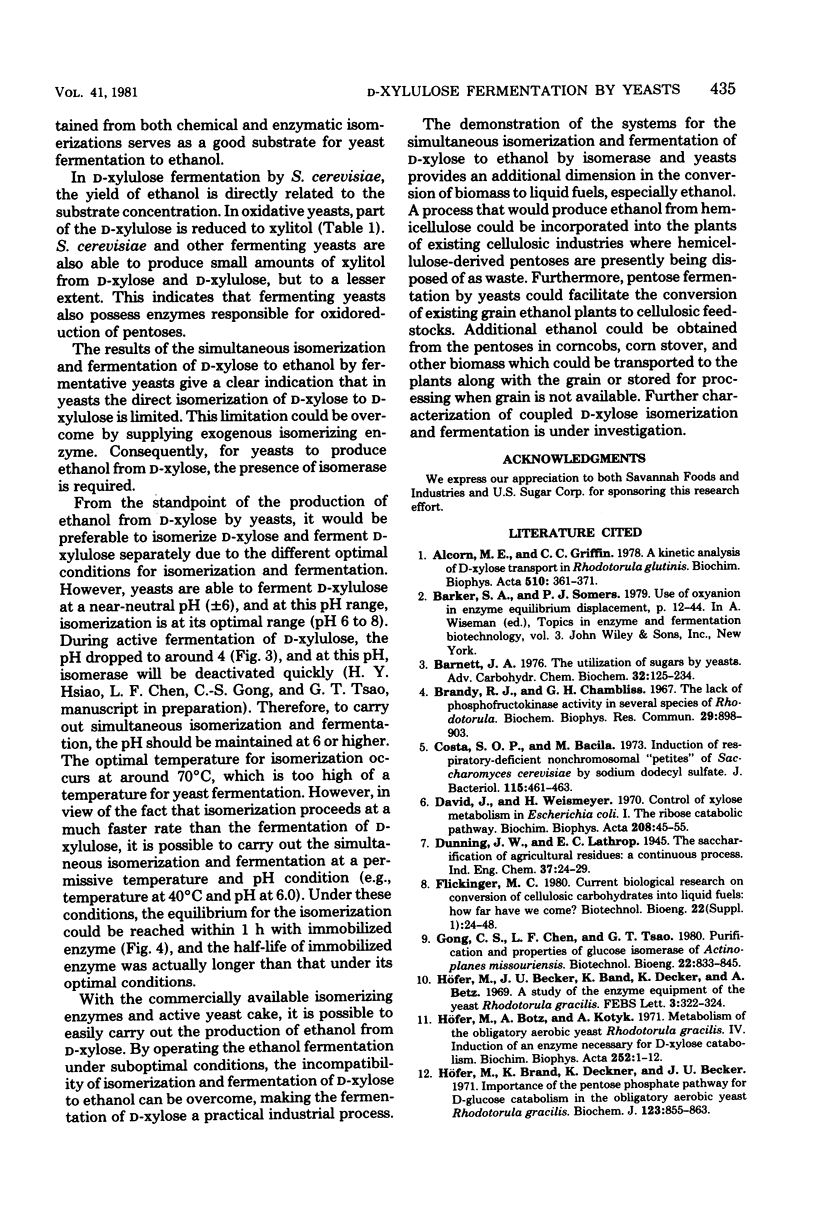
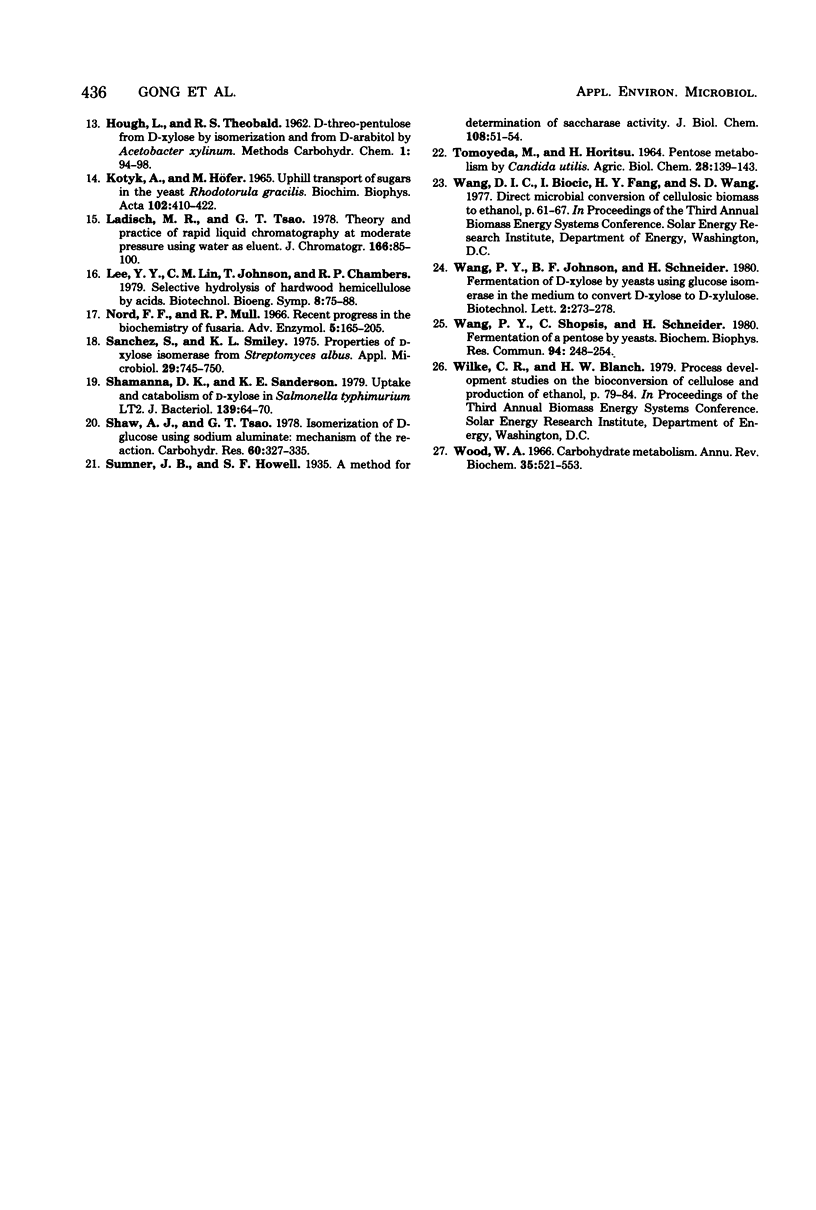
Selected References
These references are in PubMed. This may not be the complete list of references from this article.
- Alcorn M. E., Griffin C. C. A kinetic analysis of D-xylose transport in Rhodotorula glutinis. Biochim Biophys Acta. 1978 Jul 4;510(2):361–371. doi: 10.1016/0005-2736(78)90036-6. [DOI] [PubMed] [Google Scholar]
- Barnett J. A. The utilization of sugars by yeasts. Adv Carbohydr Chem Biochem. 1976;32:125–234. doi: 10.1016/s0065-2318(08)60337-6. [DOI] [PubMed] [Google Scholar]
- David J., Wiesmeyer H. Regulation of ribose metabolism in Escherichia coli. I. The ribose catabolic pathway. Biochim Biophys Acta. 1970 Apr 14;208(1):45–55. doi: 10.1016/0304-4165(70)90047-4. [DOI] [PubMed] [Google Scholar]
- Höfer M., Becker J. -U., Brand K., Deckner K., Betz A. A study of the enzyme equipment of the yeast rhodotorula gracilis. FEBS Lett. 1969 Jun;3(5):322–324. doi: 10.1016/0014-5793(69)80168-7. [DOI] [PubMed] [Google Scholar]
- Höfer M., Betz A., Kotyk A. Metabolism of the obligatory aerobic yeast Rhodotorula gracilis. IV. Induction of an enzyme necessary for D-xylose catabolism. Biochim Biophys Acta. 1971 Oct;252(1):1–12. doi: 10.1016/0304-4165(71)90086-9. [DOI] [PubMed] [Google Scholar]
- Höfer M., Brand K., Deckner K., Becker J. U. Importance of the pentose phosphate pathway for D-glucose catabolism in the obligatory aerobic yeast Rhodotorula gracilis. Biochem J. 1971 Aug;123(5):855–863. doi: 10.1042/bj1230855. [DOI] [PMC free article] [PubMed] [Google Scholar]
- Kotyk A., Höfer M. Uphill transport of sugars in the yeast Rhodotorula gracilis. Biochim Biophys Acta. 1965 Jul 22;102(2):410–422. doi: 10.1016/0926-6585(65)90131-7. [DOI] [PubMed] [Google Scholar]
- Sanchez S., Smiley K. L. Properties of D-xylose isomerase from Streptomyces albus. Appl Microbiol. 1975 Jun;29(6):745–750. doi: 10.1128/am.29.6.745-750.1975. [DOI] [PMC free article] [PubMed] [Google Scholar]
- Shamanna D. K., Sanderson K. E. Uptake and catabolism of D-xylose in Salmonella typhimurium LT2. J Bacteriol. 1979 Jul;139(1):64–70. doi: 10.1128/jb.139.1.64-70.1979. [DOI] [PMC free article] [PubMed] [Google Scholar]
- Wang P. Y., Shopsis C., Schneider H. Fermentation of a pentose by yeasts. Biochem Biophys Res Commun. 1980 May 14;94(1):248–254. doi: 10.1016/s0006-291x(80)80213-0. [DOI] [PubMed] [Google Scholar]
- Wood W. A. Carbohydrate metabolism. Annu Rev Biochem. 1966;35:521–558. doi: 10.1146/annurev.bi.35.070166.002513. [DOI] [PubMed] [Google Scholar]
- da Costa S. O., Bacila M. Induction of respiratory-deficient nonchromosomal "petites" of Saccharomyces cerevisiae by sodium dodecyl sulfate. J Bacteriol. 1973 Jul;115(1):461–463. doi: 10.1128/jb.115.1.461-463.1973. [DOI] [PMC free article] [PubMed] [Google Scholar]


